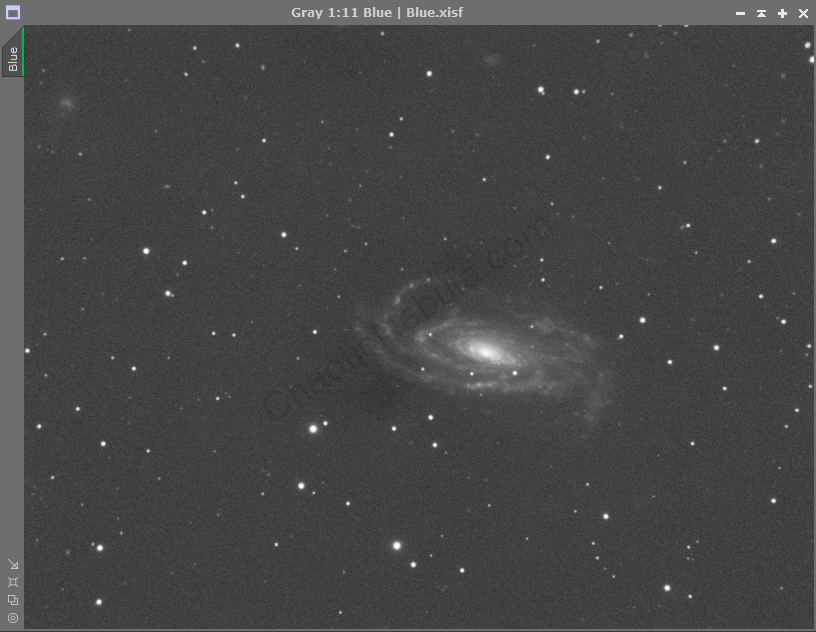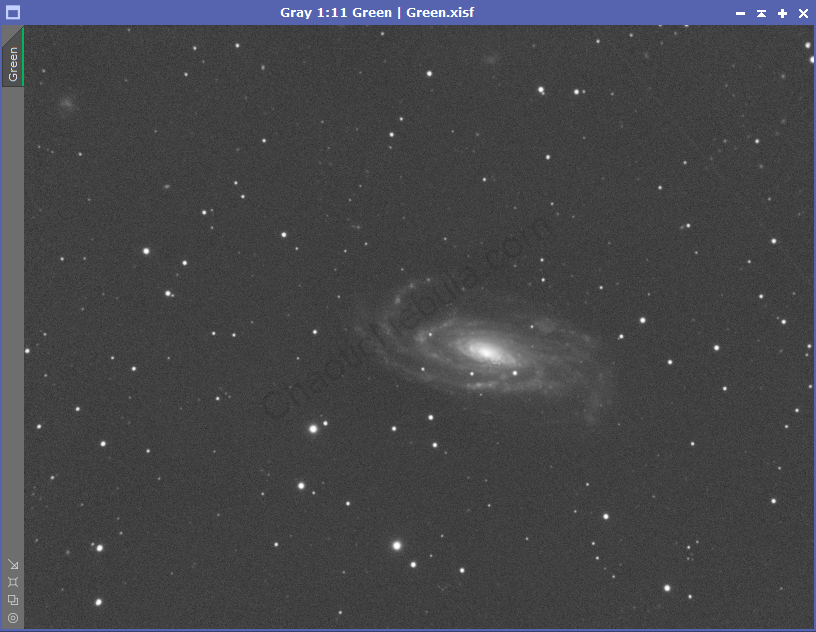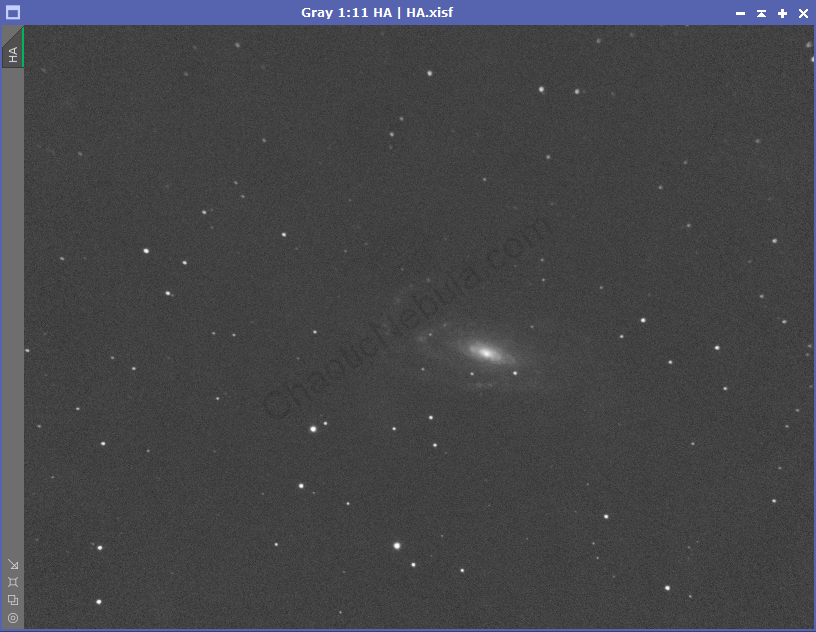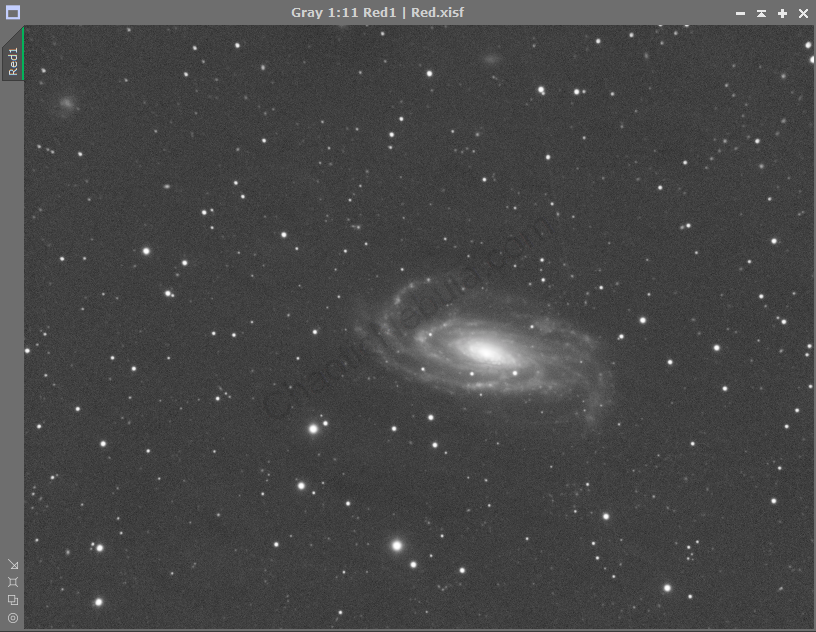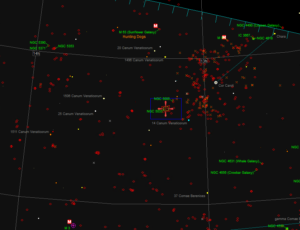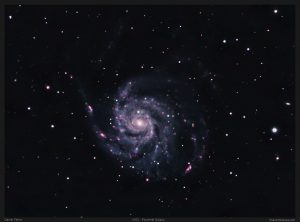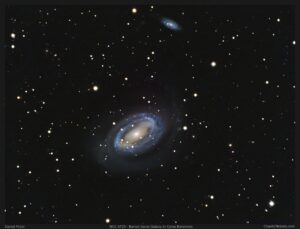The galaxy NGC 5033 is somewhere between 40-60 million light years away. From initial observations, it looks pretty bland when compared to the amazing galaxies of M51 – The Whirlpool Galaxy or M63 – The Sunflower Galaxy. When we take a closer look, a few things become visible.
First, in the core of NGC 5033 is a very visible emission band (dark patch). This is most likely caused by extremely hot gas around the galaxy’s supermassive black hole.
Second, the bottom-right galaxy arm seems to go under the core while the arm on the upper-left appears to go above. NGC 5033 is warped. The galaxy is not flat. The top-left curves up and the bottom-right curves down, while the center is fairly flat.
And third, what are those fuzzy patches (top-center and top-left)? These are additional galaxies. In fact, if you look at the annotated image, there are a few more galaxies lurking in the darkness.
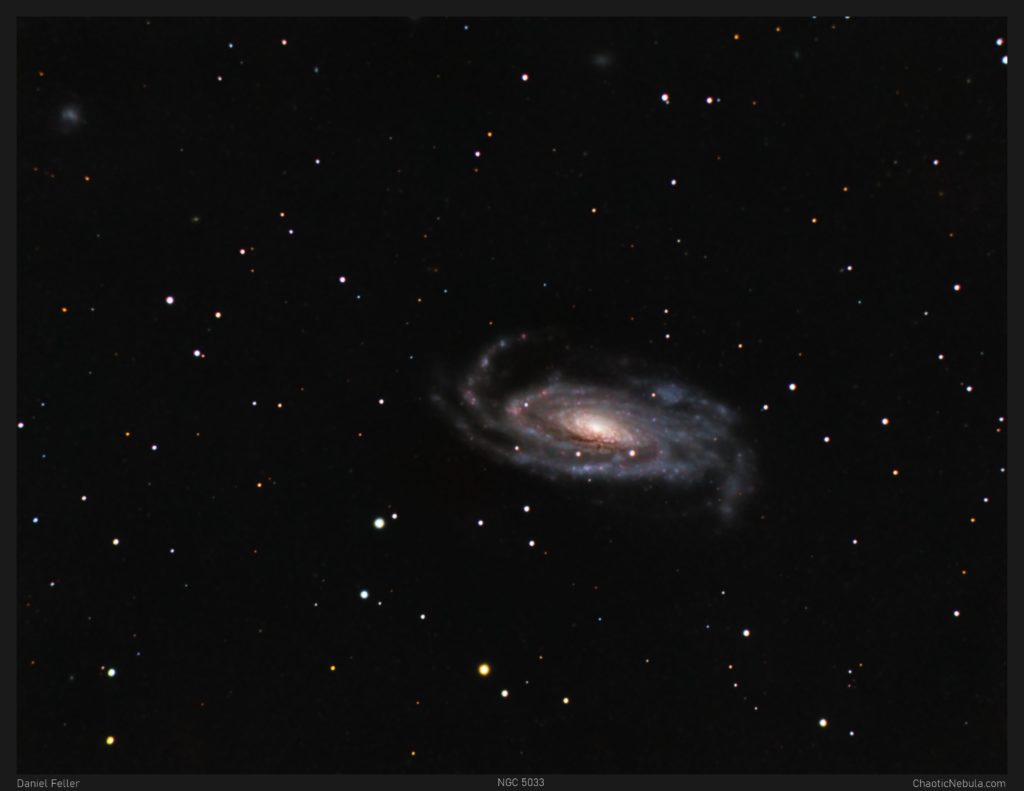
Imaging Details
- Processing Workflow: LRGB+HA
- Red: 60*600 seconds
- Green: 60*600 seconds
- Blue: 60*600 seconds
- HA: 25*600 seconds
- Total Imaging Time: 34 hours
- Imaging Dates (10 nights):
- 4/8/2022
- 4/9/2022
- 4/11/2022
- 5/6/2022
- 5/9/2022
- 5/22/2022
- 5/26/2022
- 6/2/2022
- 6/8/2022
- 6/17/2022
Annotated Image
Although our eyes are immediately drawn to the big, bright galaxy in the center, the annotated image helps identify the other galaxies in the field of view. These galaxies belong to the Principal Galaxy Catalogue.
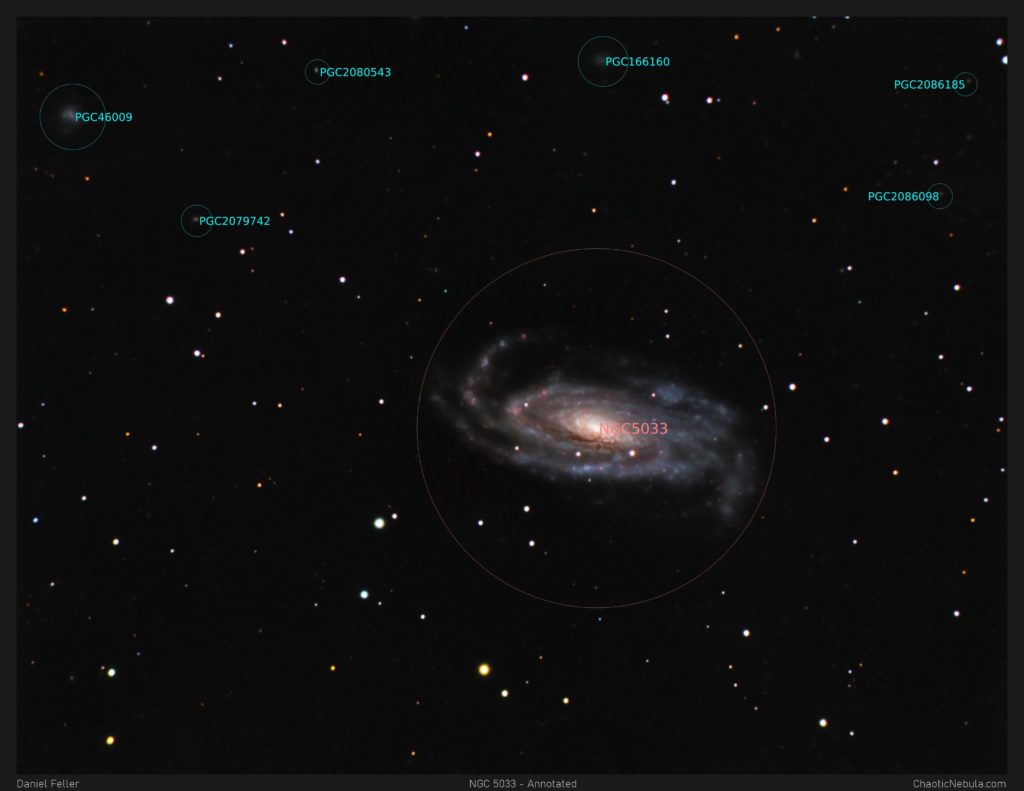
Location
NGC 5033 is in the constellation Canes Venatici (hunting dogs). From a location in the sky perspective, NGC 5044 is fairly close to a much bigger/brighter galaxy of M63 – Sunflower Galaxy. However, these two galaxies are not part of the same galaxy group. They just appear fairly close in the sky.
Imaging Notes
The Red, Green, and Blue images each received 10 hours of data (60 images at 10 minutes each). The Hydrogen-Alpha image captured 4 hours of data. Although the HA signal is extremely weak, it does add some depth to the final image (more color).
